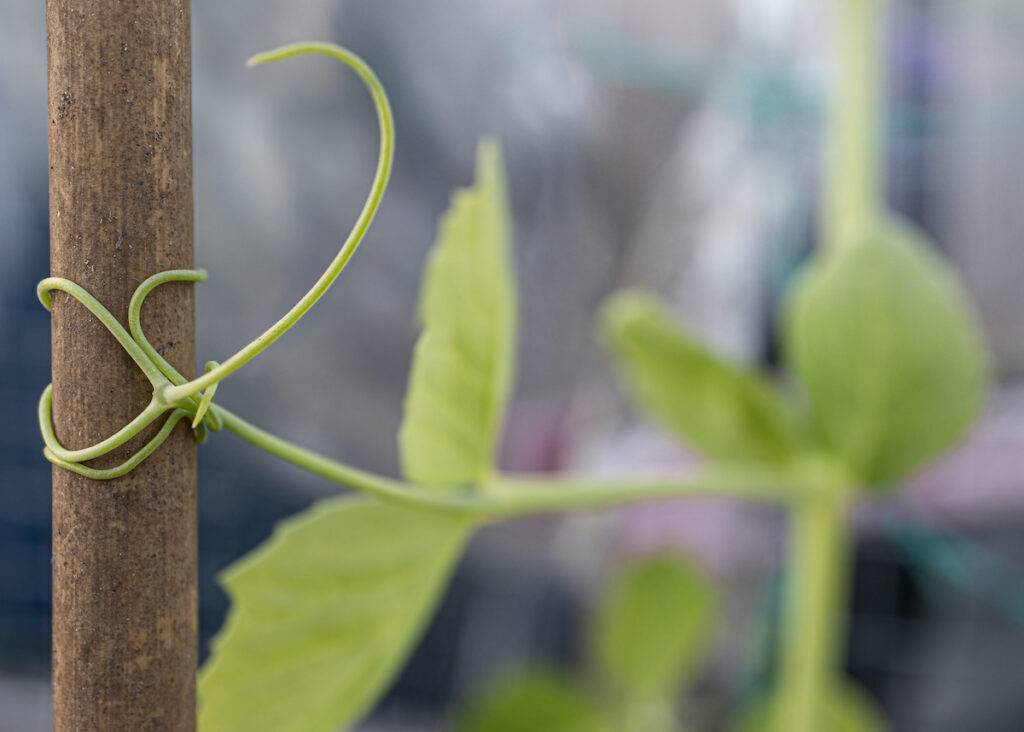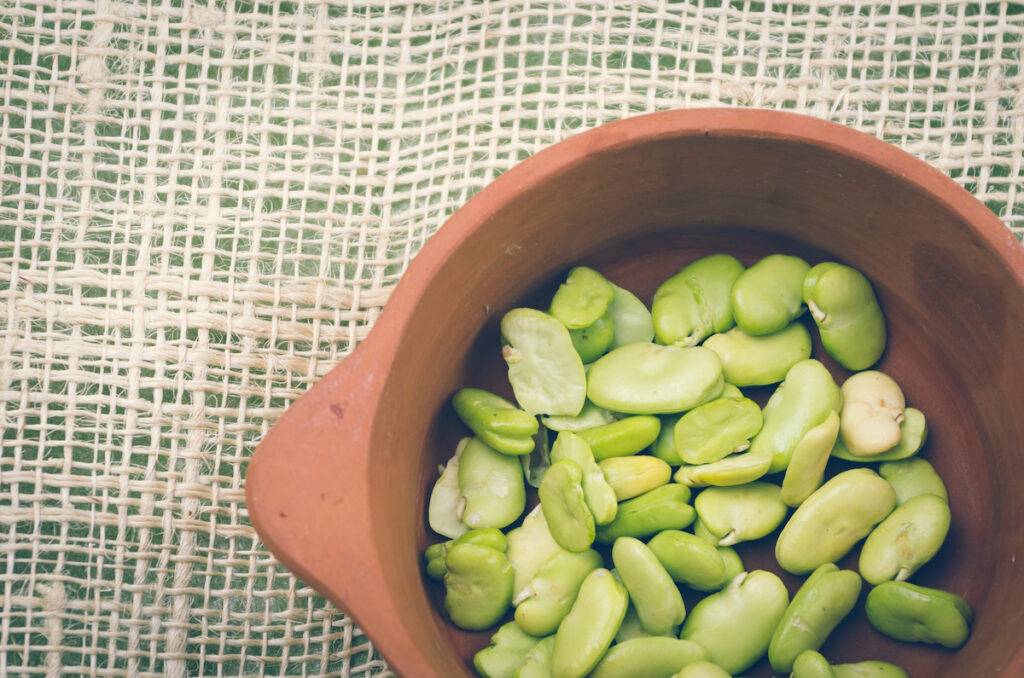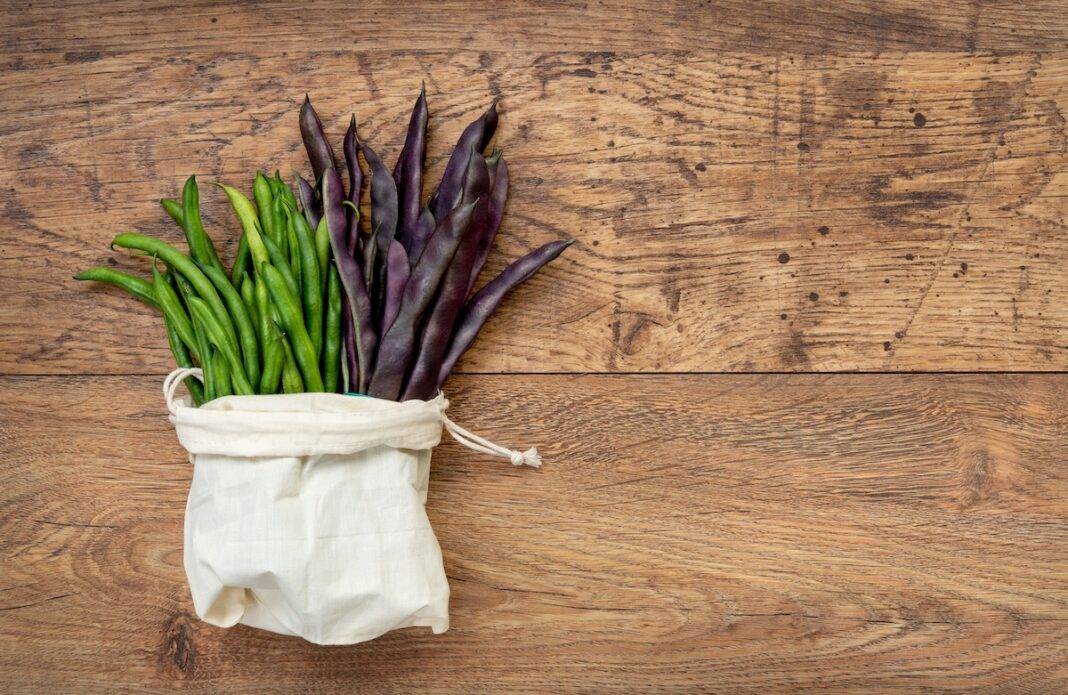Bluedot copyeditor (and gardener extraordinaire) Laura Roosevelt will write regularly on what she grows to bring to her table.
“My goodness!” a guest remarked at dinner, looking out through the windows of my screen porch toward my vegetable garden. “It’s so lush! What are you growing?”
I didn’t hesitate. “Weeds,” I replied.
That was twenty years ago, when I had young children, a job freelancing for one of the local newspapers, and nowhere near enough time to keep up with my garden, which is the size of a tennis court.
Happily, now that my kids are grown, my garden gets neater and more productive with each new summer. For the past several years, I’ve been proud to tell anyone who’ll listen that from July to the end of October, I pretty much don’t set foot in the supermarket’s produce section, instead planning meals around what’s ripe and ready just outside my back door.
Inspired by Barbara Kingsolver’s Animal, Vegetable, Miracle, a memoir of a full year she and her family spent eating locally (the output from their own farm and garden, supplemented by goods from other producers within a 100-mile radius), last summer I took things to the next level: I decided to plan my garden with a view to eating its bounty all through the winter and following spring. Like Kingsolver, I was troubled to learn that the average item of food on an American’s plate has traveled over 1,500 miles to get there, in vehicles that burn fossil fuels and emit carbon monoxide all along the way. And I dislike the idea of genetically modifying fruits and vegetables to make them less perishable — a measure that often results in less flavorful (and sometimes less nutritious) food. (Try comparing a supermarket strawberry to one from a local farm and you’ll see what I mean about the flavor.) Even worse is the common food industry practice of picking produce before it’s ready and then gassing it after transport to “ripen” it, and/or using preservatives and irradiation to keep it stable for travel. To lessen my incidental support for all these procedures, I made a goal of eating at least some produce from my own garden all year long.
Over the next year, I’ll be writing about what you should be doing at given points in the year in order to maximize off-season eating from your own gardens.
I started small, selecting just over a half dozen items that I expected would last well, either in the relative cool of my basement (the closest thing I have to a root cellar), in my freezer, or in mason jars. For basement storage, I planted garlic, red onions, and butternut and red kabocha squashes; for freezing, sugar snap peas and string beans; and for pickling, cucumbers and shishito peppers. I’d hoped also to can some tomatoes, but my crop was diminished by blight and a horde of hungry chipmunks, and I didn’t get enough fruit. Better luck next year.
My “root cellar” foods have held up wonderfully. I’m writing this in late February, and I still have about 50 heads of garlic that show no signs yet of sprouting or shriveling (though both will occur sooner or later). Ten braids of red onions (with a dozen or so onions per braid) remain hanging from nails I drove into the basement’s ceiling joists. Some individual onions have begun sprouting, which is the beginning of the end for them. Once the sprouts get long, the body of the onion itself is starting to rot and is not something you want to eat. (When this happens, I cut off the green sprouts and use them as scallion substitutes, so at least I get something out of it, and the rest of the now inedible onion goes into my compost.) The larger onions tend to sprout first, but I’ll probably be eating the smaller ones for at least another month. As for the squashes, I still have about 20 left, and they look as good as any you’d find in Stop & Shop.
I’ve used up almost all of the beans and sugar snaps I froze, whereas the pickles … well, it turns out I don’t eat pickles very often, so these may still be languishing in my pantry when it’s time to start pickling next year’s cukes and peppers.

Note that I am writing from Martha’s Vineyard, which is in hardiness zone 7. Planting schedules, soil temperatures, and even what you can successfully grow will vary according to your region’s hardiness zone, so be sure you know your zone and how it affects what you can do in the garden. See the USDA Plant Hardiness Zone Map to find your zone, and for a good introduction to what you can plant in your area. In zone 7, it’s too late for you to enjoy homegrown garlic this year, since it’s planted in the late fall for harvesting the following summer, but everything else I preserved for this winter (and much more) can be planted at various points from now to midsummer. A few tips:
Sugar Snap Peas
Sugar Snap Peas (and snow peas, if you prefer them or want both) should be in the ground by the end of April, as they don’t like hot weather. If you’re running late, there’s a trick that makes them emerge faster: Start by soaking the seeds overnight in a bowl of water. The next day, drain them, then fold them in dampened newsprint. Keep the newsprint moist for the next two days, then check the peas daily. When they’ve started to sprout, plant them, and they’ll be up before you know it. Peas need to grow on trellises, to which they fasten themselves with their own tendrils. (Sometimes a twist-tie or two is helpful to keep vines grown heavy with pods attached to the trellis.) My “trellis” is chicken wire stretched between tall stakes — at least six feet high, as peas are vigorous growers.
String Beans
String Beans come in many varieties. I’m partial to the purple ones (which turn green when cooked), because they’re easier to see amidst all the foliage. Pole beans need trellises or other supports, since they’re vines and grow upward. Bush beans don’t, but they require a lot of bending or squatting when picking, which your knees and back may not enjoy.
Don’t plant beans until there’s no danger of frost and the weather is getting warm for good. The soil needs to be at least 48℉. I usually estimate this, but this year, I’m going to buy a soil thermometer. (Shirley’s in Vineyard Haven carries them, or you can get one online for under $20.) Soil that’s too cold and moist delays germination and can cause the seeds to rot in the ground, which I’ve learned from painful experience. You can speed germination by sprouting beans in newsprint as described for sugar snaps above.
Lima Beans
You might believe you hate lima beans, but that’s just because you’ve never had them fresh out of the garden. Homegrown lima beans are absolutely delicious; think succotash, think briefly boiled and slathered with butter, think sautéed with garlic. Trust me on this.
Like string beans, lima beans come in both climbing and bush varieties. They take sixty to ninety days to mature, with the bush beans coming in before those grown on a trellis. Do not try my damp newspaper method of germinating. I’ve attempted it twice, and both times, when I checked on the seeds after two days, they were covered in white mold and rotting, without even a trace of germination. Plant your lima beans directly in the ground three weeks after the last frost, once daily temperature has been consistently 65℉ for a week or so, probably mid to late May.

Onions
Onions can be planted from seed, but you need to start seeds indoors six weeks before planting them outdoors, so we’re too late for that. A faster, surer method is planting from “starts,” which are essentially very small onions, about the size of your fingertip. My starts always grew a bit and gave me onions, but they were always on the small side, probably because I planted them too late; starts, I’ve learned only recently, like to be planted in cool soil, probably in late March or early April. Again, we’re a bit late; starts will still work, just not as well as they would have if planted earlier.
Two years ago, I ordered onion seedlings online (you receive a big clump of them held together with a rubber band), and now I’ll never grow onions any other way. Last summer, some of my onions grew to the size of softballs. Onion seedlings should be planted when the soil is about 50℉ — usually early May.
There are a number of other preservable vegetables that you can plant from seed before the end of May, including beets, cabbage, carrots, cucumber, and peppers. Early crops of these can be pickled or canned (canning preserves vegetables in brine, without vinegar). In a couple of months, I’ll write about crops planted later in the season, as well as second plantings of some of those already mentioned. Here’s a useful planting calendar for Zone 7. Peruse this to get a sense of what you should be planting when, and don’t hesitate to use Google to find out the optimal soil temperature for planting anything specific.
Recipe for Garbanzo Stew with Collards and Winter Squash
Here you can view a recipe I made in early February, using my own garlic, onions, and butternut squash, along with collard greens that were still growing in my garden right up to the weekend when we had those below 0℉ temperatures.

